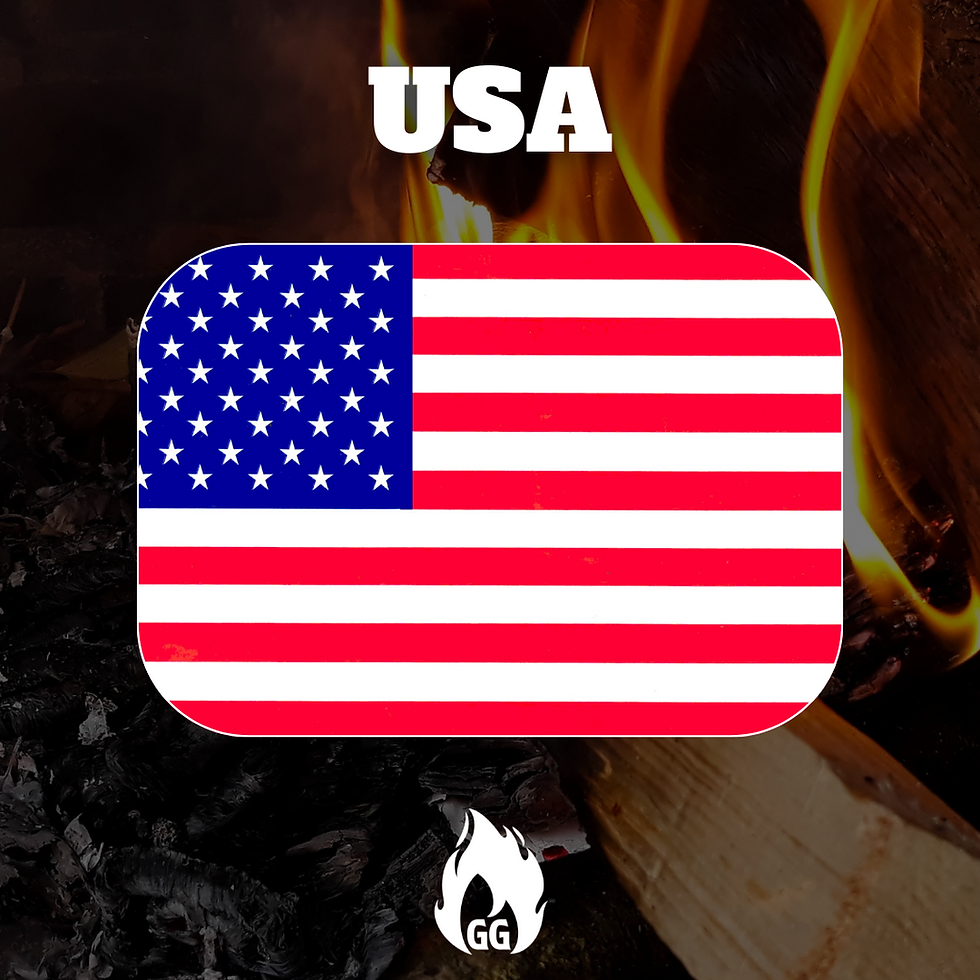Choosing the Right Fuel for Your Fire Grill
- Ryan Green
- May 9
- 2 min read

Fuel choice is crucial in live-fire cooking—it directly impacts heat control, burn time, and the depth of flavour in your food. Whether you prefer the intense heat of lumpwood charcoal, the steady burn of wood splits, or the long-lasting embers of whole logs, each option offers distinct advantages.
In this guide, we’ll break down the pros and cons of each fuel type, explore different hardwood varieties, and recommend our suppliers.
Lumpwood Charcoal – High Heat & Quick Ignition
Lumpwood charcoal is a fast-burning, high-heat fuel made by carbonizing hardwood. It’s ideal for searing meats or quick grilling sessions due to its ability to ignite quickly and reach high temperatures.
Pros:
✅ Fast ignition – ready to cook in 15–20 minutes.
✅ High heat – great for quick grilling and high-temp searing.
✅ Natural hardwood flavour – no additives or binders.
✅ Low ash production – cleaner than charcoal briquettes.
Cons:
❌ Shorter burn time – requires frequent refueling.
❌ Heat control can be tricky – burns inconsistently compared to briquettes.
Wood Splits – Balanced Heat & Natural Smoke
Wood splits are small logs cut down for cooking, offering a balance between controlled heat and natural smoke flavour. They provide steady embers for grilling, roasting, and indirect cooking, making them a great choice for longer cooks.
Pros:
✅ Consistent heat output – great for maintaining steady temperatures.
✅ Enhanced flavour – adds natural smokiness to food.
✅ Sustainable & natural – no processing or additives.
✅ Versatile – suitable for grilling, smoking, and slow roasting.
Cons:
❌ Slower to ignite – requires good airflow and dry conditions.
❌ More ash production – compared to lump charcoal.
Wood Logs – Traditional Live-Fire Cooking
For the most authentic fire grilling experience, whole logs are ideal. They create long-lasting embers, perfect for Argentinian-style cooking or direct ember roasting.
Pros:
✅ Longest burn time – maintains heat for hours.
✅ Deep wood-fired flavour – smokier and richer than charcoal.
✅ Creates glowing embers – ideal for low-and-slow cooking.
✅ Sustainable choice – especially when using kiln-dried logs.
Cons:
❌ Slow ignition – takes 45+ minutes to reach optimal embers.
❌ Requires more space – needs proper airflow and storage.
Best Wood Varieties for Live-Fire Cooking
Different hardwoods burn at varying temperatures, provide unique smoke profiles, and impact the taste of your food. Here are some of the best options:
For High Heat & Strong Embers
🔥 Ash – Long burn time, produces consistent heat.
🔥 Oak – A traditional choice for grilling embers.
🔥 Hickory – Strong smoky flavour, great for BBQ meats.
For Mild Smoke & Subtle Flavour
🔥 Beech – Burns evenly with a mild smoke output.
🔥 Cherry – Slightly sweet, enhances pork and poultry.
🔥 Pecan – Adds gentle richness to meats.
For Intense Smokiness
🔥 Mesquite – Bold and earthy, great for beef.
🔥 Applewood – Fruity, perfect for smoked poultry.
🔥 Maple – Subtly sweet, works well with vegetables.
Recommended Fuel Suppliers
Lumpwood Charcoal
Splits and Logs
Final Thoughts
The fuel you choose shapes your grilling experience—whether it’s the intense heat of lumpwood charcoal, the steady burn of wood splits, or the traditional embers of whole logs. Experimenting with different hardwood varieties unlocks deeper flavours, helping you master live-fire cooking techniques.
.png)
.png)



Comments